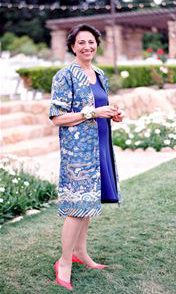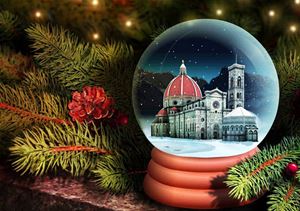
Slightly off the tourist trail, yet only a stone’s throw away from piazza Pitti, if you were to turn right onto via dello Sprone, after a few steps you would find yourself standing in the charming piazza della Passera. Although one of Florence’s smallest squares, it is, without a doubt, one of the most characteristic in the Oltrarno neighbourhood and a hidden gem, filled with artisan shops, food delights and a rich history.
During the thirteenth century, Florentine law divided up the city into various named quarters, which were each assigned a heraldic flag. The area, which now hosts piazza della Passera, came under the zone Quattro Leoni (four lions), boasting a yellow flag with four red lions. One of the piazza’s renowned trattorias, 4Leoni, has retained this historical name from the time of the first Grand Duke of Tuscany, Cosimo de’ Medici.
At the heart of the piazza’s revitalisation is Stefano di Puccio, owner of the 4Leoni restaurant. He is a fount of information about the square’s history and has played an indispensable role in its progress thus far. With roots in San Frediano’s Calcio Storico team, he is no stranger to the area, and would frequently come to the piazza before it was officially recognised as such by the city in 2005.
There are two versions—one perhaps more widespread and convincing than the other—as to how the square got its name. The first version is somewhat tragic: the direct translation of passera, meaning sparrow, may stem from the year 1348, when Florence was ravaged by the plague, as told by Messer Giovanni Boccaccio in the Decameron. Legend tells the story of children finding a dying sparrow in the piazza. Unable to save the bird, it died, bringing with it the Black Death, which subsequently spread throughout the city, killing over half of Florence’s population. The more generally accepted origin of the name emanates from the slang meaning of passera and has its roots in prostitution. It is widely believed that a brothel used to occupy the space, also explaining the square’s curious shape.
Interestingly, of the four streets that make up the square, only two entrances can lay claim to the address, piazza della Passera. All other entrance doors to the flats, whose windows look onto the square, lie on one of the surrounding streets. Due, in part, to this fact, the piazza has remained a rather secluded spot.
Thanks to Stefano di Puccio and his trattoria, which opened on May 24, 1995, this previously hidden gem, known only to locals, has been unmasked for all to enjoy. Events related to Festa della Rificolona now range from alfresco dinners for the homeless of Florence to free exhibitions, concerts and the occasional aperitivo: ‘Any excuse for a good party,’ Stefano assured me.
Every September, piazza della Passera hosts several evenings filled with festivities. Last year, tribute was paid to the great Florentine artist, Mario Mariotti, who lived just off the Piazza on via Toscanella, also home to his atelier. A brand new photography and music project was launched for last month’s festivities, also featuring the promotional trailer for the film La città conclusa, directed by Mariotti’s son, Andrea. Although Mariotti achieved international fame, his name is not one all Florentines may be familiar with. This new surge of life in the piazza hopes to change this.
Tucked away at the end of via Toscanella, a clay statue sits in the wall. The so-called Madonna di Puzzo displays a bust of a woman holding her nose in disgust. Mariotti sculpted the statue in 1984, when a large rubbish skip was placed at the end of his street. Fittingly, the smell at the end of this road, where the uninhibited have relieved themselves, produces much the same effect on the public. Stefano also tells me that Mariotti inserted one of his own teeth into the opposite wall as a form of art work, but unfortunately my attempts to find it were in vain.
Another of his sculptures sits high on the interior wall of the Trattoria 4Leoni, above the bathrooms. The clay statue, reminiscent of Brussels Manneken Pis, shows a small, blond-haired boy, with his back to the public. All of these works of art are a reminder of the Florentine artist, who succeeded in bringing artists together and was a great organiser of events; a legacy the Piazza now wishes to continue.
Another historical figure from the world of art also originates from this piazza. Leonardo da Vinci’s world-renowned portrait, the Mona Lisa, is celebrated annually in piazza della Passera. His muse, Lisa Gherardini, was born on via Sguazza, parallel to the square and now on the anniversary of her birth, on June 15, Monnalisa Day celebrates the discovery of the Mona Lisa in Florence.
With a history rich in art and tragedy and a present and future filled with festivities, good food and wine, and ateliers to discover down its side streets, piazza della Passera may well become one of your favourite Florentine haunts.







